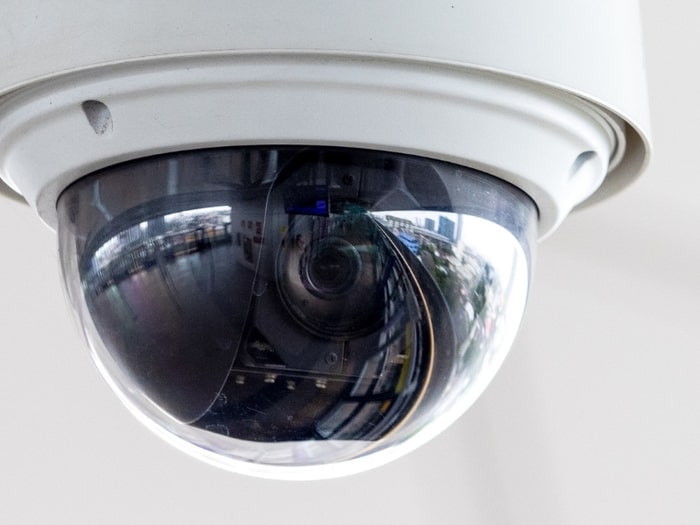
Storing video requires a lot of storage space. To make this manageable, video compression technology was developed to compress video, also known as a codec. In 2003, codec h.264 (commercial name is AVC) was released. It’s now the industry standard for video compression, as it offers a good compression and can be played on virtually any device and platform. All modern browsers, operating systems and mobile platform provide support for h.264.
H.265 / HEVC
Ten years is a long time in the IT industry, so in 2012 the successor to h.264 was released, known as h.265 (commercial name is HEVC). HEVC is promising a massive 50% bandwidth reduction for the same video quality. A significant saving and with Cloud recording, it can mean the difference between installing 5 or 10 IP security cameras at your location.
Although h.265 was released almost 5 years ago, adoption is slow. The primary reason for this, is that unlike h.264 which has 1 patent pool, h.265 has 3 patent pools with different pricing structures and terms & conditions. The second patent pool (HEVC Advance) was introduced in 2015, 3 years after the launch. This unclarity about the royalties situation around h.265 was hindering the adoption and as a result primary browsers have no support at all (e.g. Chrome, Firefox) or only partial support (Edge). Due to this, many content providers have stuck with h.264 because at least they know it will always play.
AV1
In 2015, the Alliance for Open media was launched by several large IT companies like Google, Microsoft, Mozilla and Cisco to create an open and royalty free codec called AV1. Based on Google’s open ‘VP10’ codec with technology from Cisco ‘Thor’ and Mozilla’s ‘Daala’ codecs the consortium set to create an alternative for h.265. This codec is a strong competitor for h.265 for 5 reasons:
- Royalty free
AV1 is completely royalty free, meaning no patents need to be paid to any patent pool. Google has already proved it’s possible to release a royalty free codec with VP9. In addition, the codec will be open source with the very permissive BSD license speeding up adoption.
- Better compression
Depending on which benchmark you use, AV1 will be around 30% better than h.265 / HEVC. Again a significant improvement at a reasonable CPU costs. In contrast to HEVC, AV1 will also show these improvements at low bitrate cameras, which is especially useful for IP Security cameras.
- Will play everywhere
With APPLE, GOOGLE, MICROSOFT, and MOZILLA supporting AV1, we can expect support in all major browsers and operating systems in the near future. With this new codec, support for h.265 in major browsers is very unlikely to happen. Unlike h.265, AV1 support is already available in development versions of Firefox.
- Hardware accelerated
Decoding video requires a lot of CPU. Many devices like your laptop, phone or tablet have hardware acceleration to prevent heated devices and battery drain. AV1 is backed by major chip vendors like INTEL, AMD, BROADCOM and ARM. It will take at least 1 year before we see the first devices shipped with AV1, but hardware support looks promising.
- Content providers support AV1
Major content suppliers like NETFLIX, FACEBOOK, YOUTUBE, BBC, AMAZON and HULU will provide content in AV1. Youtube already boycotts HEVC by providing 4K video only via its own VP9 codec. As a consequence, it currently does not play on Apple devices.
How will AV1 affect the video surveillance industry?
Manufacturers of IP security cameras are now slowly adopting h.265 in their security cameras, but playing video remains problematic on mobile devices and in browsers. The solution is to transcode video from h.265 to another format, but this has major downsides:
- Transcoding means decompressing the video and compressing it again in a different format. This generally takes time and comes with “encoding delay.” As a consequence, your real-time video is not as real-time as you would expect
- Transcoding requires a lot of CPU, and you can only transcode a few video streams at the same time. This adds costs to any video surveillance platform, whether its Cloud or a traditional recorder.
- Transcoding reduces the video quality. Codecs compress video by throwing away video data, and once it’s removed, it cannot be recovered again. Everytime you compress video, the codec will throw video data away resulting in lower quality.
To prevent transcoding, it is important that security cameras and devices people use support the same codecs. Now with HEVC, cameras start to support it, but the popular customer devices still lack support. With AV1, the majority of the platforms can quickly add support (Firefox already has in a development version). The question is: when will we see the first IP security cameras that supports it?
Whether the next industry standard becomes h.265 or AV1 is still unclear. What is clear is that Eagle Eye Networks is closely following the market and when one of the two becomes dominant we will support it.
Written by Erik Jan Philippo – Product Owner, Eagle Eye Networks
Contact Sales
Other posts that might interest you

3 ways to maximize the value of security cameras
Security cameras seem to be everywhere: law enforcement and other public agencies employ cameras, as do businesses of all kinds and an ever-increasing share of households. However, most of what…
April 2, 2024
BVIO 2014 Hackathon
BazaarVoice held their annual conference + hackathon and we were lucky enough to participate. Because of the strong engineering talent they attract it made sense for us to let people…
May 27, 2014
Our Video API: Getting Previews
This blog post is an example of how you can use the Eagle Eye Networks Video API to embed the preview stream on another site. This is a common request from…
May 27, 2014








